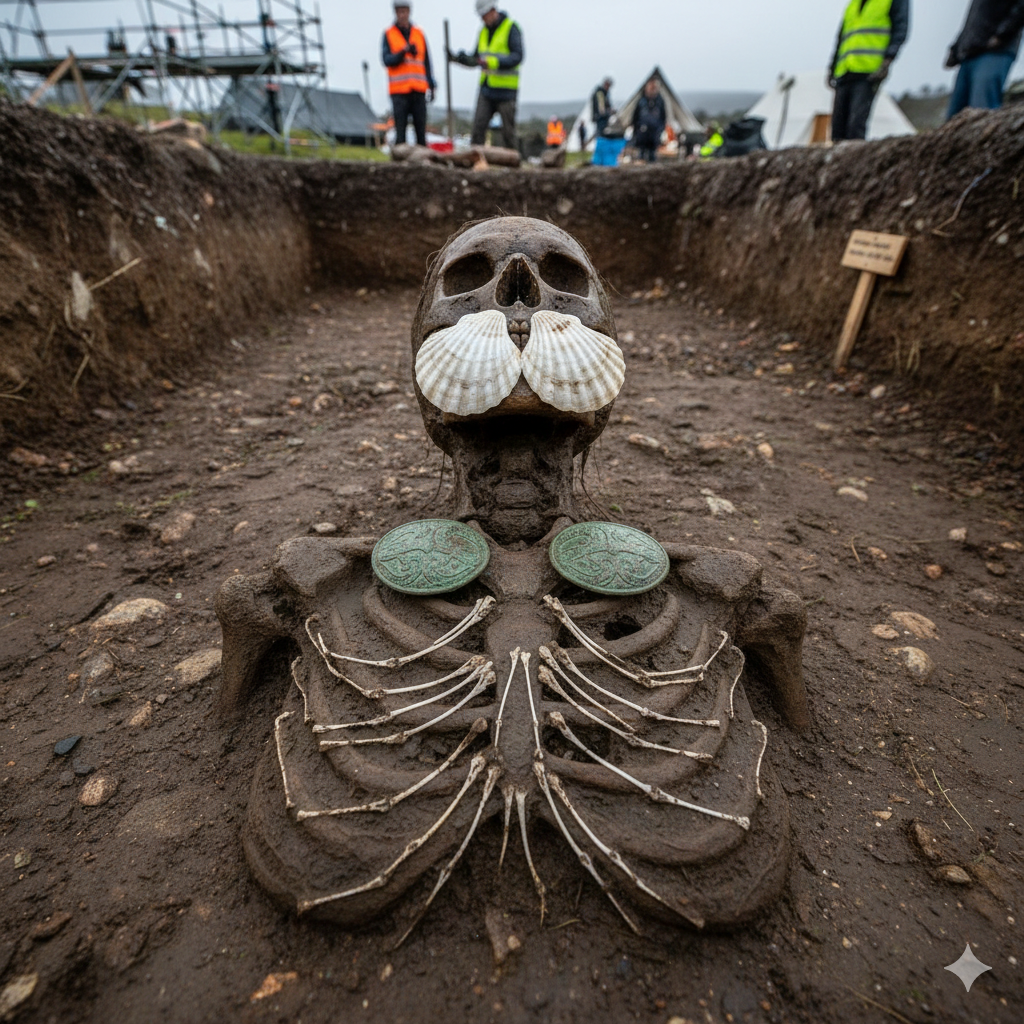The Unprecedented Discovery
Archaeologists in Trøndelag, central Norway, are mystified by a unique discovery: the well-preserved remains of a Viking Age woman from the 9th century who was buried with two scallop shells placed deliberately over her mouth. The grave, found in the village of Bjugn after a metal detectorist spotted a brooch, has been hailed as one of Norway’s most intriguing recent archaeological finds because the ritual is entirely unknown in pre-Christian Scandinavia.
Details of the Burial and Her Status
The deceased woman, believed to have been a high-status housewife or husfrue on a local farm, was interred with typical Viking Age jewelry that indicated her social standing. These grave goods included a pair of large oval cup brooches—used to fasten the straps of her apron dress—and a small ring brooch for her petticoat. The exceptional preservation of the remains and artifacts, despite the shallow burial depth, prompted emergency funding for a salvage excavation.
The most striking feature, however, was the careful arrangement of the two large scallop shells. They were positioned with their curved sides facing outward, partially covering her mouth. Project leader Raymond Sauvage of the NTNU Science Museum stated, “This is a practice that is not previously known from pre-Christian graves in Norway. We do not yet know what the symbolism means.”
Theories on the Shells’ Meaning
The presence of the scallops is deeply confusing to experts because they carry strong associations that conflict with the burial’s timing:
-
Christian Symbolism: In the later Middle Ages (300 to 400 years after this burial), scallop shells became the definitive symbol of the pilgrimage to Santiago de Compostela (St. James). Their appearance in this 9th-century pagan context is centuries too early for this common association, suggesting either:
-
Early, Undocumented Cultural Contact: The woman, or her family, may have been exposed to very early, remote Christian or foreign traditions that used the shell as a symbol of life, death, or the afterlife journey.
-
Indigenous Pagan Ritual: The shells may have held an entirely separate, local, and now lost symbolic meaning within Norse pagan beliefs, perhaps relating to the sea, fertility, or even as a form of protection against the deceased’s return (draugar).
-
-
The Bird Bones: Adding to the mystery, small bird bones—mostly from wings—were found arranged around the body. These may have been sewn onto a garment or blanket, potentially symbolizing a spiritual journey or transformation in the Norse afterlife.
Further DNA and stable isotope analysis is underway to determine the woman’s origins, health, and if she was related to another Viking-age individual found buried nearby. 700 701 702 703 704 705 706 707 708 709 710 711 712 713 714 715 716 717 718 719 720 721 722 723 724 725 726 727 728 729 730 731 732 733 734 735 736 737 738 739 740 741 742 743 744 745 746 747 748 749 750 751 752 753 754 755 756 757 758 759 760 761 762 763 764 765 766 767 768 769 770 771 772 773 774 775 776 777 778 779 780 781 782 783 784 785 786 787 788 789 790 791 792 793 794 795 796 797 798 799 800 801 802 803 804 805 806 807 808 809 810 811 812 813 814 815 816 817 818 819 820 821 822



